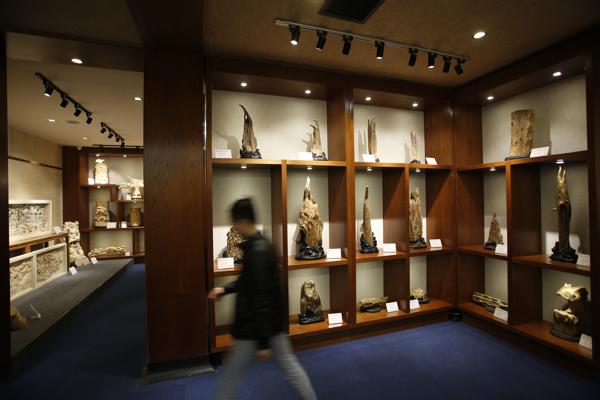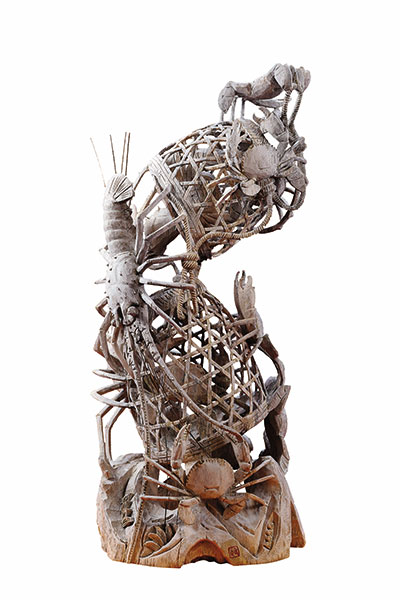
[Photo/China Daily]
A museum dedicated to aloeswood carvings and related art recently opened in Beijing’s Dongcheng district. The private museum showcases a collection of more than 100 pieces of carvings using such resinous wood, as well as raw aloeswood of rare scales, including a giant trunk standing about 10 meters high in the courtyard of the house where it’s located.
The items displayed are just a small part of the collection of Shen Chuxuan, the museum’s founder.
The collection includes aloeswood products made both in China and other parts of the world, with some of the items dating back several centuries.
“My purpose (in starting the museum) is to offer an opportunity for more common people to understand aloeswood and involve them in efforts to protect the rare resource,” Shen says.
He shows that resin coagulated on a tree’s surface after it has suffered fungal infection owing to injuries gives a lasting pleasant fragrance.
A mixture of aloeswood and the resin has been used as material for incense sticks and medicine in China since ancient times.

An artwork shown at the Aloeswood Museum.[Photo/China Daily]
Incense sticks made from aloeswood were particularly favored by royals in imperial China.
Such trees are soft enough to be used in making sculptures.
Many carved pieces in Shen’s museum are done by Chen Peichen, an inheritor of Chaozhou-style woodcarving-a national intangible cultural heritage.
Among them The Lobster and the Crab-Trapping Baskets seems to draw the most attention. The work not only vividly depicts the crabs and a lobster crawling between two bamboo baskets, but also skilfully shows the crabs trapped in the baskets.
Because of the special texture, carving on aloeswood is more complex than on other materials, such as bamboo or horns, Chen says.
Shen, who used to be a property developer, took a fancy to aloeswood when he was young. A sharp eye for quality pieces have helped him gain a deeper understanding of the trees and expand his collection.

[Photo/China Daily]
China’s wild aloeswood trees have almost been wiped out, and they have been listed as “secondary-level protected plants” since the 1990s, Shen says.
Now a director of the professional committee of the aloeswood industry under the China Marketing Association, Shen has involved himself in the promotion of the carving culture and the protecting of such trees.
Besides promoting related knowledge and culture at his museum, Shen hopes that it can help people distinguish authentic aloeswood from fake pieces in the market.
Shen has also established a cultivation and protection base of wild aloeswood in Shenzhen, in South China’s Guangdong province.
He has transplanted more than 400 saplings from Southeast Asia to the 13-hectare base in Shenzhen.
If you go
10 am-5 pm, daily. 3 North Guorui Road, Dongcheng district, Beijing. 010-8719-6887.
